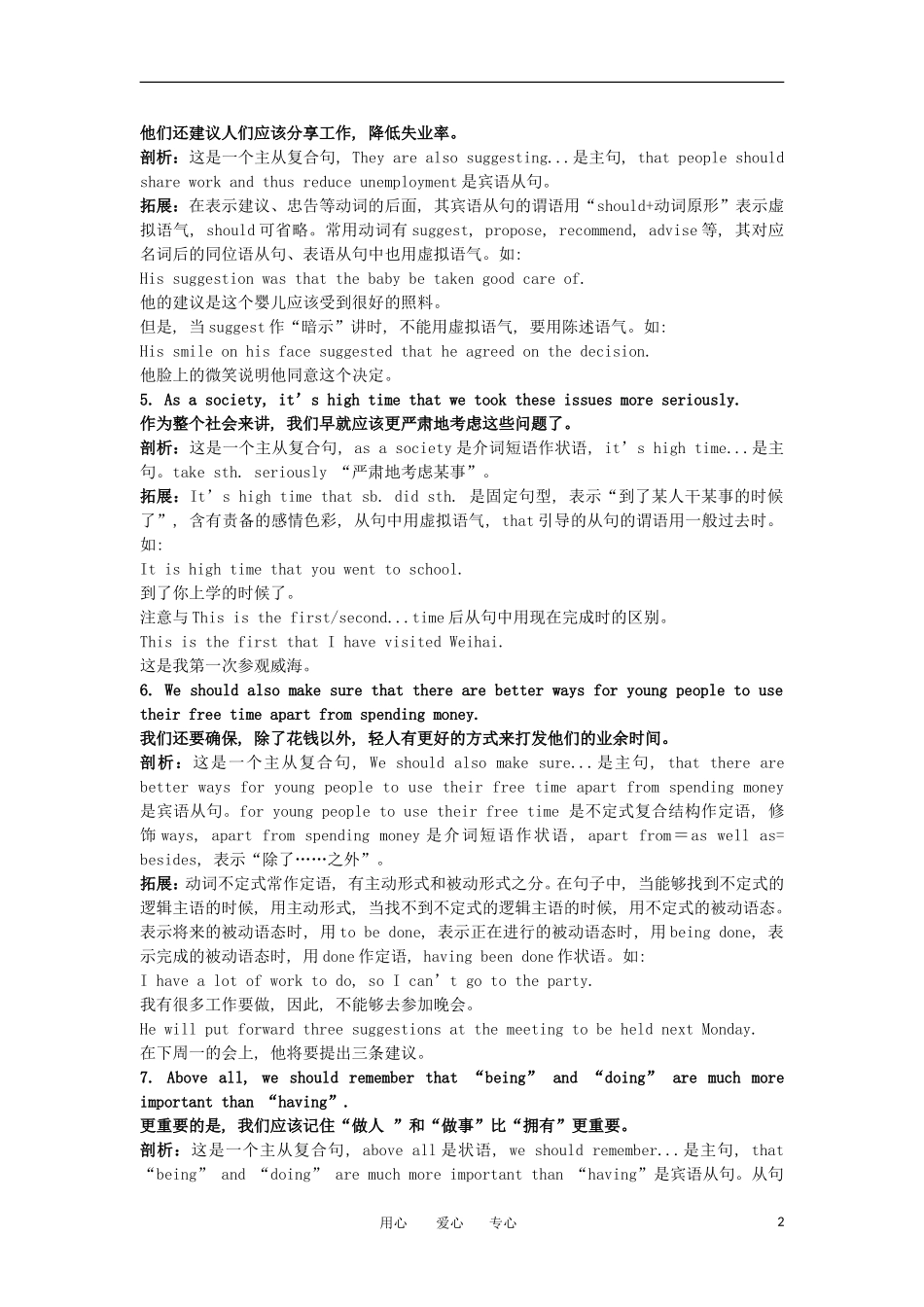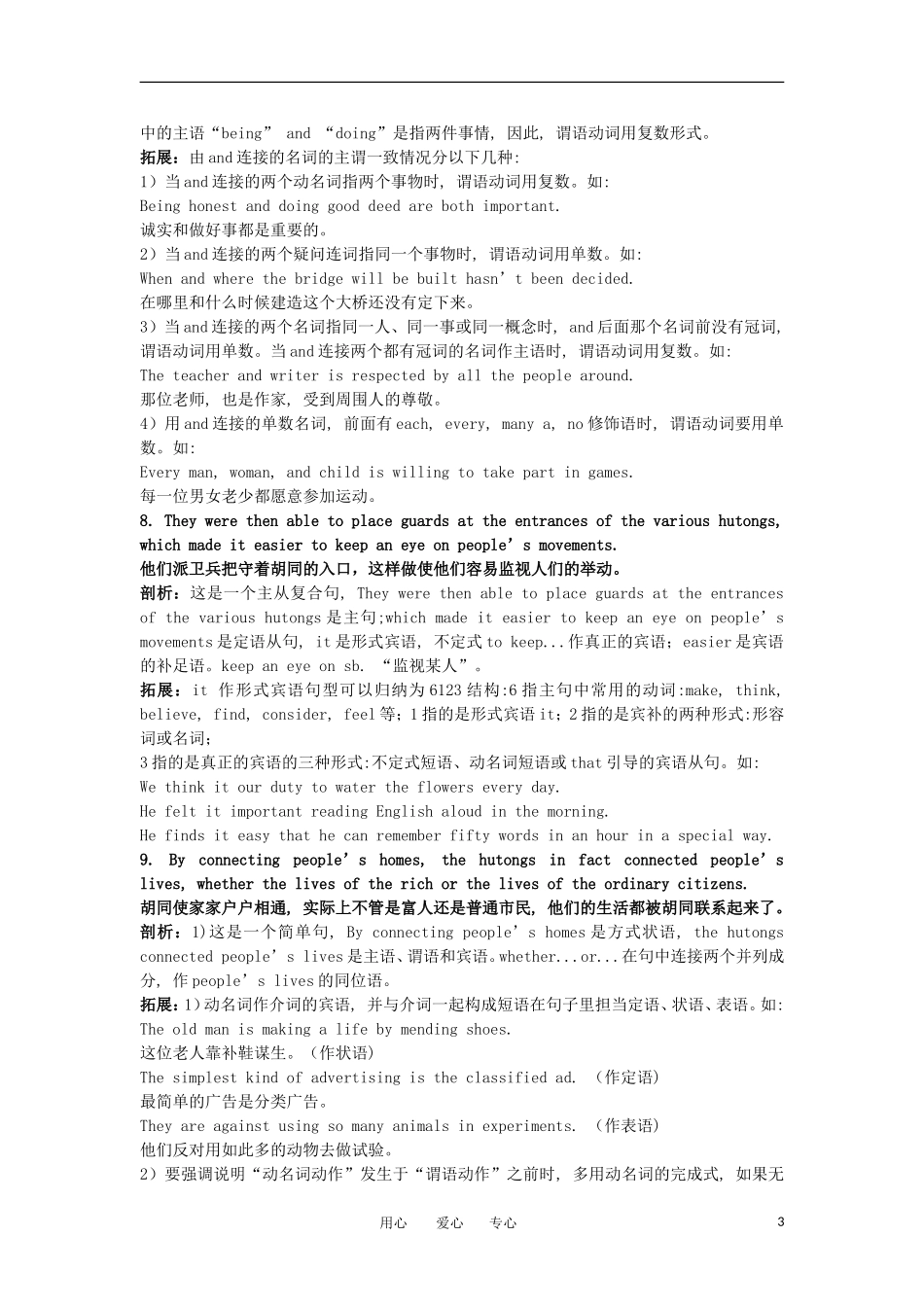难句·剖析·拓展1. Besides, we’re all taxpayers so the more we earn the more tax we have to pay to those who govern us.除此之外, 我们都是纳税人, 因此, 我们挣的钱越多, 就要向管理我们的政府缴更多的税。剖析:这是一个由 so 连接的并列句, 第一个并列分句是 we’re all taxpayers , 第二个并列分句是 the more we earn the more tax we have to pay to those..., 其中包含一个固定结构 the more..., the more..., who govern us 是定语从句, 修饰 those。拓展:辨析 the more...the more...和 more and more:虽然同是形容词的比较级, 但是两个有不同含义。the more...the more...“越……越……”, 表示两个过程按比例同时递增。前一个 the more...结构为分句, 后一个 the more...结构为主句;通常是从句在前, 主句在后。这种结构往往有省略。如:The sooner you start, the more quickly you’ll finish it.=If you start sooner, you will finish it more quickly.你开始得越早, 结束得就越快。more and more...“越来越……”,表示一个过程的不断增长。如:As he walked on, he felt himself getting more and more tired.他继续往前走的时候,感到越来越疲乏。2. And the result of all this?Not increased happiness, but stress and less free time to be ourselves and enjoy being with our friends and families.而这一切的结果呢?不是更快乐了, 而是压力增加了, 留给自己和家人、朋友享受乐趣的时间更少了。剖析:这两个简单句可合为一句话。the result 是主语, is 是系动词, 表语是由not...but...连接的 Not increased happiness, but stress and less free time。to be ourselves and enjoy being with our friends and families 是不定式作定语, 修饰less free time, 当两个不定式连用时, 第二个可以省略 to。increased 是过去分词作定语修饰 happiness。拓展:1)not...but...“不是……而是……”, 表示取舍关系,常连接主语、表语和宾语。not only...but also...“不但……而且……”, 表示递进关系,常连接两个并列的主语、谓语、状语和并列句。2)过去分词作定语相当于一个被动语态的定语从句,现在分词作定语相当于一个主动语态的定语...


